1962
Minolta Hi-Matic used as the camera for recording the Friendship 7 mission, a U.S. space flight
In the 1950s, Minolta was one of the first companies in Japan to participate in camera fairs in the U.S. and actively expand in overseas markets. In those days, the space race between the two superpowers was becoming increasingly intense. In 1958, the U.S. established the National Aeronautics and Space Administration (NASA) and in 1961 succeeded in a manned space flight. In 1962, astronaut John Glenn made an orbital space flight and successfully took photographs of the Earth from space, using the Minolta Hi-Matic camera. This great accomplishment revolutionized the public image of Japanese cameras in the global market. The camera is exhibited as part of the permanent collection of the Smithsonian National Museum of Natural History in Washington D.C., U.S.
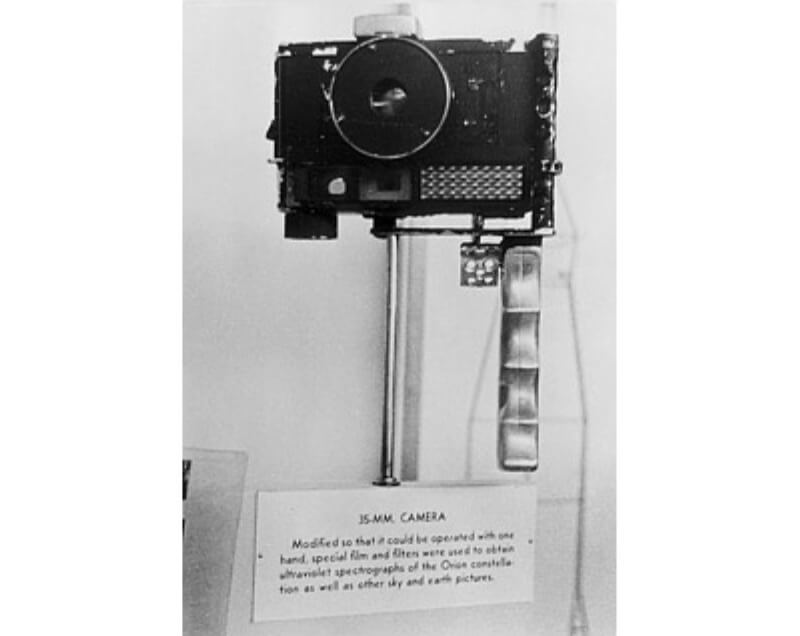
1962
First European subsidiary established
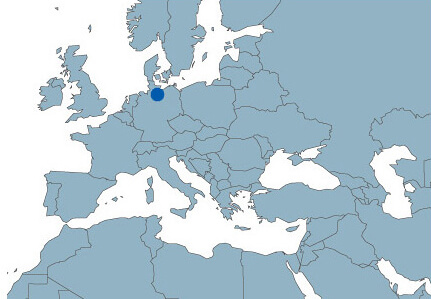
1966
Tachibana Hozenkai Foundation (currently the Konica Minolta Science and Technology Foundation) established
1969
Minolta Space Meter, an exposure meter, installed in the Apollo 11 spacecraft, which made the first manned landing on the moon in the history of mankind
In 1968, the Minolta Space Meter was installed in the Apollo 8 spacecraft. It was manufactured in response to a request from the National Aeronautics and Space Administration (NASA) to improve the Auto Spot 1°, an exposure meter which Minolta marketed at that time, for the Apollo program. The exposure meter was also installed in the Apollo 11 spacecraft, which made the first manned landing on the moon in the history of mankind in 1969, and contributed to the space exploration project of the century.
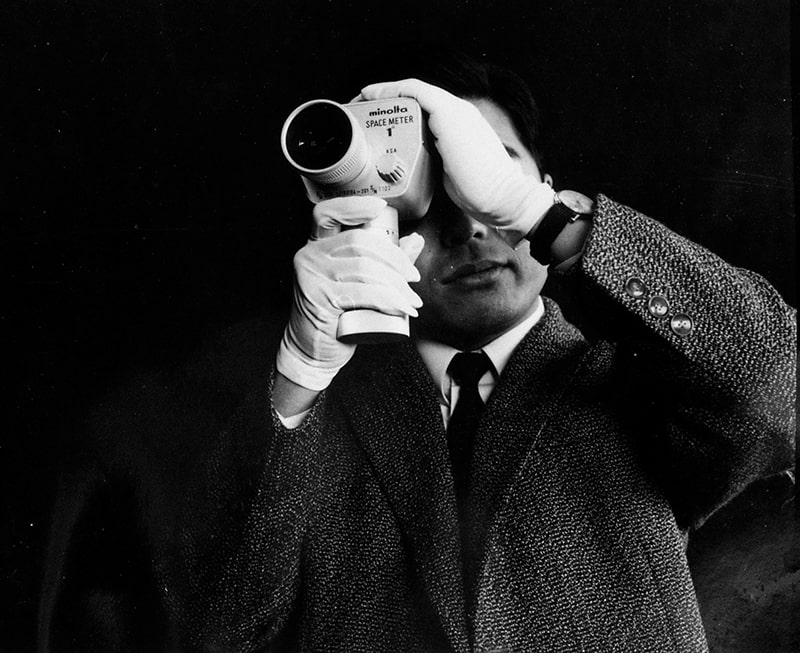
1973
Sakura Color ID System, a driver's license printing system, begins service across Japan
1960
Minolta Copymaster, the company’s first copier (a wet-process diazo copier), completed
Minolta embarked on the development of optical equipment, copiers in particular, by leveraging its technology refined through the development of camera products and completed the first copier, Minolta Copymaster, a wet-process diazo copier, in 1960. After the introduction of this product, Minolta continued development efforts to meet customer needs which were growing rapidly with the advancement of the information society.
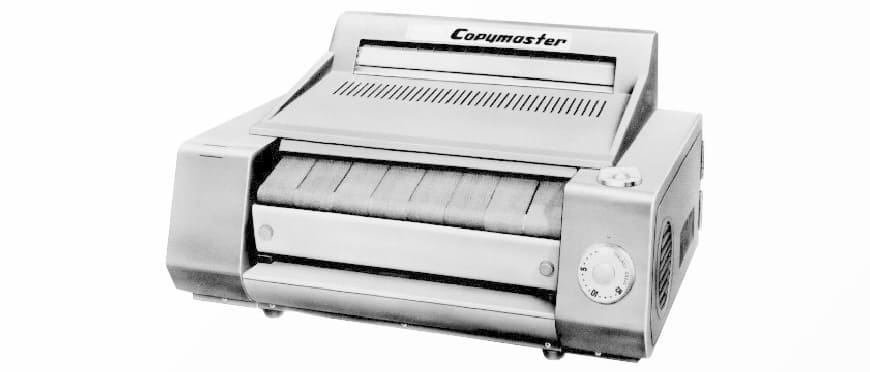
1966
First unit of the MS-10, the company’s first mass-produced optical planetarium, installed
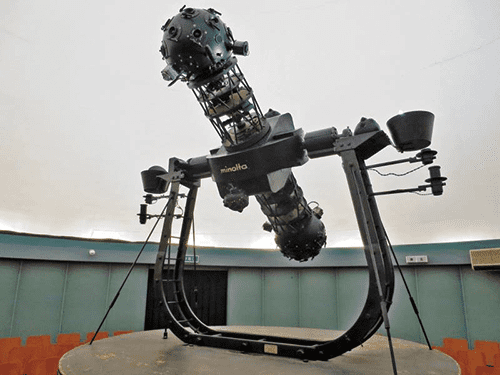
1968
Minolta TV Color Analyzer, a television color correction analyzer, marketed to launch into the industrial measuring instrument field
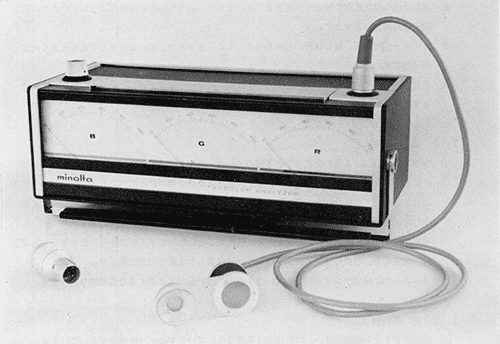
1971
U-BIX480, the company’s first plain paper copier, marketed
After years of R&D efforts and using its proprietary technology, the company succeeded in developing an electro-photographic copier using plain paper, the plain paper copier (PPC) that is widely used today. First introduced at a business show in 1970, this model was launched in 1971 when it was given the name U-BIX480. It was so successful that orders exceeded the production capacity of the company.
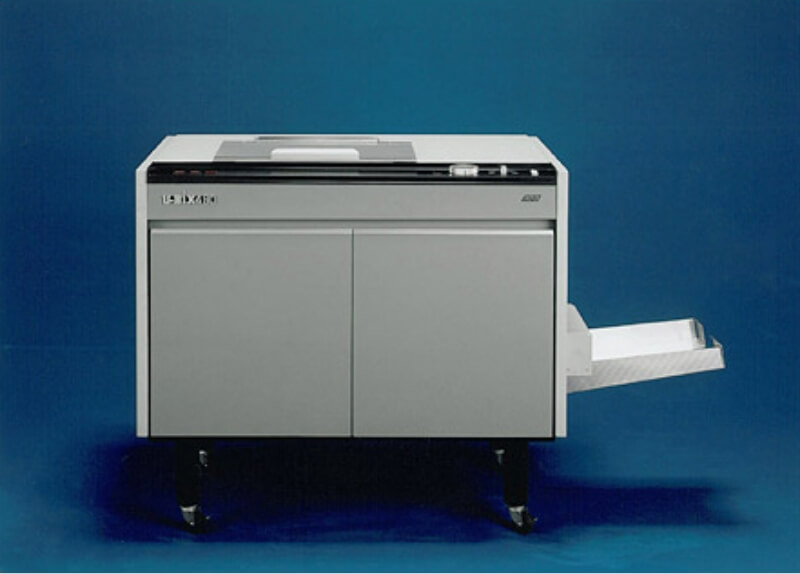
1975
Konica C35EF (Pikkari Konica), the world’s first camera with a built-in flash, launched
Persistent efforts to maximize ease of operation led to the development of the Konica C35EF (nicknamed “Pikkari Konica”), the world’s first camera with a built-in flash. This product was designed to meet the basic needs of general users for a camera that would allow them to take photos at any time. The product was a phenomenal success and heralded the popularization of cameras.
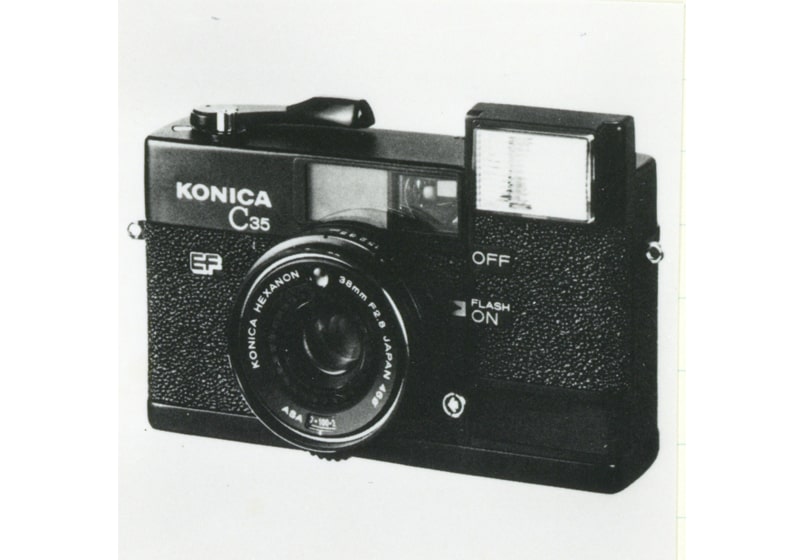
1976
Sakura Color 24, the first film with 24 exposures in the industry, marketed
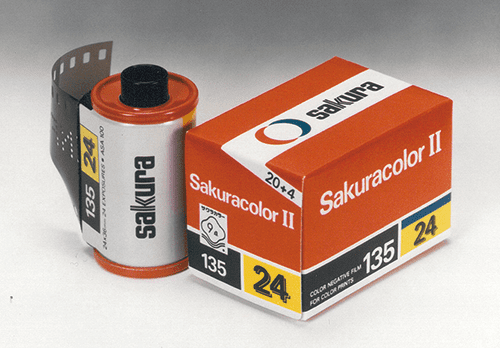
1977
OXIMET MET-1471, the world’s first finger-measurement type pulse oximeter, launched
A pulse oximeter is a device which measures the oxygen saturation level of arterial blood (SpO2) without drawing blood. Thanks to its ability to detect the amount of oxygen in the body in real time, this device is widely used in operating rooms and intensive care units in hospitals, as well as for treating respiratory outpatients. After the launch of the OXIMET MET-1471, the world’s first finger-measurement type pulse oximeter, in 1977, the company continued to reduce the size and enhance the quality of the product. More than 40 years later, the company’s pulse oximeters were widely used for effectively determining the seriousness of Covid-19 patients.
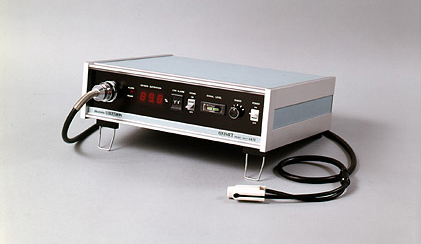
1977
Konica C35AF (Jaspin Konica), the world’s first autofocus camera, launched
The world’s first autofocus camera, the Konica C35AF (nicknamed "Jaspin Konica"), was developed through dedicated R&D efforts to prevent defocusing (blurred out-of-focus images), which, according to a market survey, was responsible for 36% of failed photos. With its autofocus function, this camera allowed users to take clear photos just by pressing the shutter button.
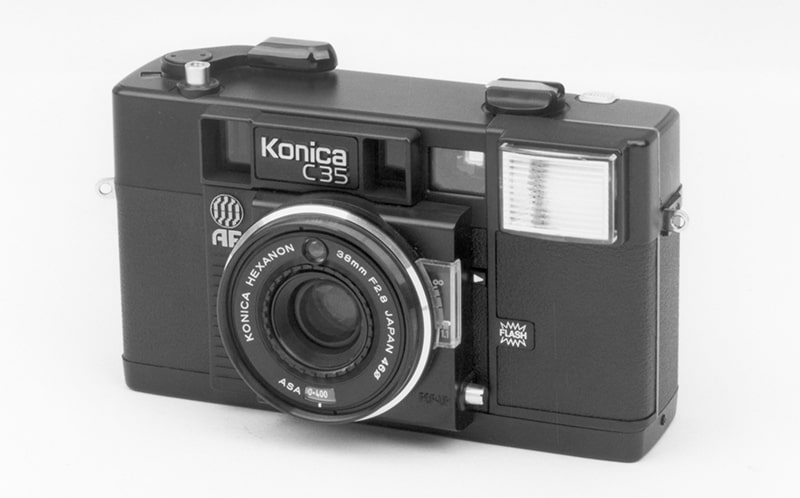
1960
Minolta Copymaster, the company’s first copier (a wet-process diazo copier), completed
Minolta embarked on the development of optical equipment, copiers in particular, by leveraging its technology refined through the development of camera products and completed the first copier, Minolta Copymaster, a wet-process diazo copier, in 1960. After the introduction of this product, Minolta continued development efforts to meet customer needs which were growing rapidly with the advancement of the information society.

1962
Minolta Hi-Matic used as the camera for recording the Friendship 7 mission, a U.S. space flight
In the 1950s, Minolta was one of the first companies in Japan to participate in camera fairs in the U.S. and actively expand in overseas markets. In those days, the space race between the two superpowers was becoming increasingly intense. In 1958, the U.S. established the National Aeronautics and Space Administration (NASA) and in 1961 succeeded in a manned space flight. In 1962, astronaut John Glenn made an orbital space flight and successfully took photographs of the Earth from space, using the Minolta Hi-Matic camera. This great accomplishment revolutionized the public image of Japanese cameras in the global market. The camera is exhibited as part of the permanent collection of the Smithsonian National Museum of Natural History in Washington D.C., U.S.

1962
First European subsidiary established

1966
First unit of the MS-10, the company’s first mass-produced optical planetarium, installed

1966
Tachibana Hozenkai Foundation (currently the Konica Minolta Science and Technology Foundation) established
1968
Minolta TV Color Analyzer, a television color correction analyzer, marketed to launch into the industrial measuring instrument field

1969
Minolta Space Meter, an exposure meter, installed in the Apollo 11 spacecraft, which made the first manned landing on the moon in the history of mankind
In 1968, the Minolta Space Meter was installed in the Apollo 8 spacecraft. It was manufactured in response to a request from the National Aeronautics and Space Administration (NASA) to improve the Auto Spot 1°, an exposure meter which Minolta marketed at that time, for the Apollo program. The exposure meter was also installed in the Apollo 11 spacecraft, which made the first manned landing on the moon in the history of mankind in 1969, and contributed to the space exploration project of the century.

1971
U-BIX480, the company’s first plain paper copier, marketed
After years of R&D efforts and using its proprietary technology, the company succeeded in developing an electro-photographic copier using plain paper, the plain paper copier (PPC) that is widely used today. First introduced at a business show in 1970, this model was launched in 1971 when it was given the name U-BIX480. It was so successful that orders exceeded the production capacity of the company.

1973
Sakura Color ID System, a driver's license printing system, begins service across Japan
1975
Konica C35EF (Pikkari Konica), the world’s first camera with a built-in flash, launched
Persistent efforts to maximize ease of operation led to the development of the Konica C35EF (nicknamed “Pikkari Konica”), the world’s first camera with a built-in flash. This product was designed to meet the basic needs of general users for a camera that would allow them to take photos at any time. The product was a phenomenal success and heralded the popularization of cameras.

1976
Sakura Color 24, the first film with 24 exposures in the industry, marketed

1977
OXIMET MET-1471, the world’s first finger-measurement type pulse oximeter, launched
A pulse oximeter is a device which measures the oxygen saturation level of arterial blood (SpO2) without drawing blood. Thanks to its ability to detect the amount of oxygen in the body in real time, this device is widely used in operating rooms and intensive care units in hospitals, as well as for treating respiratory outpatients. After the launch of the OXIMET MET-1471, the world’s first finger-measurement type pulse oximeter, in 1977, the company continued to reduce the size and enhance the quality of the product. More than 40 years later, the company’s pulse oximeters were widely used for effectively determining the seriousness of Covid-19 patients.

1977
Konica C35AF (Jaspin Konica), the world’s first autofocus camera, launched
The world’s first autofocus camera, the Konica C35AF (nicknamed "Jaspin Konica"), was developed through dedicated R&D efforts to prevent defocusing (blurred out-of-focus images), which, according to a market survey, was responsible for 36% of failed photos. With its autofocus function, this camera allowed users to take clear photos just by pressing the shutter button.

